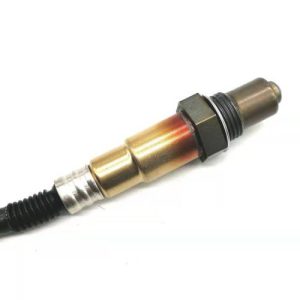Your cart is currently empty!
Automotive Oxygen Sensor Secrets what is oxygen sensor
Why Automotive Oxygen Sensors Matter
Your vehicle's automotive oxygen sensor silently dictates 23% of its fuel efficiency while reducing harmful emissions by up to 90%. This critical emissions control component, found in every modern car since 1981, constantly analyzes exhaust gases to optimize combustion. Understanding its function and maintenance can prevent costly repairs while keeping your engine running cleaner and longer.
Anatomy of an Automotive Oxygen Sensor
Modern automotive oxygen sensors contain:
• Zirconia ceramic sensing element (0.5-1.2mm thickness)
• Platinum electrodes (dual-layer coating)
• Stainless steel protective housing
• Integrated heater circuit (12V DC)
Positioned pre- and post-catalytic converter, these sensors generate 0.1-0.9V signals to the ECU within 300ms, maintaining the ideal 14.7:1 air-fuel ratio critical for efficient combustion.

Global Market Leaders in Sensor Technology
Three manufacturers dominate 78% of the automotive oxygen sensor market (IBISWorld 2023):
1. Bosch (32% share) - Supplies Toyota, Volkswagen, BMW
2. Denso (28%) - Primary partner for Honda, Hyundai, Ford
3. Delphi Technologies (18%) - GM, Fiat Chrysler specialist
Top-selling vehicles using these sensors include:
• Toyota Camry (2.5L models: 2 sensors)
• Ford F-150 (3.5L EcoBoost: 4 sensors)
• Honda Civic (1.5T engines: 3 sensors)
Common Failure Causes and Diagnosis
- Silicon contamination (RTV sealant misuse)
- Lead poisoning (improper fuel additives)
- Heater circuit failure (12.6Ω resistance ideal)
- Thermal shock (rapid cooling cracks ceramic)
Essential Replacement Tools
Professional technicians use:
• 22mm oxygen sensor socket (6-point design)
• Torque wrench (30 N·m specification)
• Dielectric grease (sensor connector protection)
• Anti-seize compound (nickel-based only)
• OBD-II scanner (live data verification)
Step-by-Step Replacement Guide
- Disconnect negative battery terminal
- Locate sensor using service manual diagrams
- Apply penetrating oil to corroded threads
- Remove with 22mm crowfoot wrench
- Install new sensor with manufacturer torque specs
- Reconnect electrical harness
- Clear ECU error codes
- Test drive monitoring fuel trims

Post-Installation Verification
Confirm successful replacement by checking:
• Short-term fuel trims between ±5%
• Sensor cross-counts: 8-12 cycles/minute
• Heater circuit current draw: 0.5-1.2A
• Closed-loop operation within 90 seconds
Key Maintenance Benefits
- 15-25% fuel economy improvement
- 90% reduction in hydrocarbon emissions
- 5-year extended catalytic converter life
- Consistent engine performance
Critical Usage Precautions
⚠️ Never:
• Use leaded gasoline
• Apply silicone-based sealants
• Clean sensors with abrasives
• Ignore P0130-P0167 trouble codes
✔️ Always:
• Use OEM-specified replacements
• Check wiring harness integrity
• Perform biannual diagnostics
Authority Sources
1. IBISWorld Automotive Sensors Market Report 2023
2. SAE Technical Paper 2024-01-1120: Sensor Contamination Study
3. EPA Emission Control System Guidelines 2024

Leave a Reply